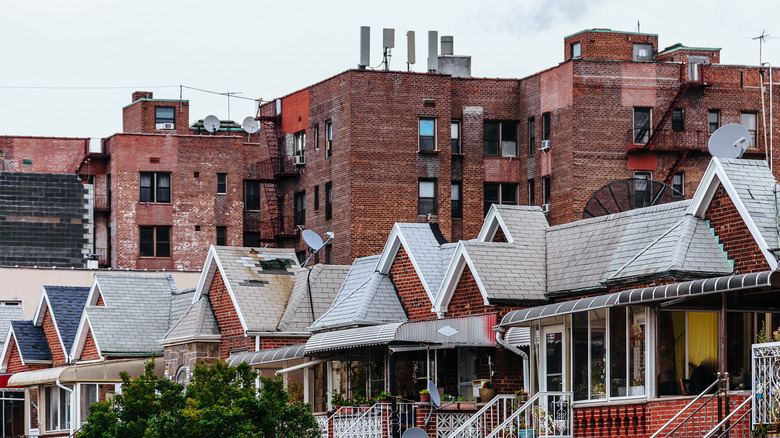New York's All-Electric Act Goes Into Effect In 2026 - Here's Why It's Important
Discussions about reducing greenhouse gas emissions often center on electric vehicles (EVs) as the auto industry works toward a cleaner future. Nissan has pledged to go all-electric, and innovative new EV chargers are popping up around the U.S. The New York legislature has taken its climate change efforts a step further in focusing on commercial building emissions with its new All-Electric Building Act. This law goes into effect the first day of 2026 and mandates that all new buildings in the state of seven stories or less be fully electric. That means no gas-powered appliances for cooking, hot water, or home heating.
It's an important move, even for a state that gets almost half of its grid energy from gas. As of 2023, 46 percent of New York's total energy use came from power plants fueled by natural gas, more than twice that of nuclear or hydroelectric plants. Since buildings in New York account for about 32 percent of the state's total emissions, this new law could have a major impact. A 2024 study commissioned by the New York State Energy Research and Development Authority (NYSERDA) claims that the law could lower home energy use by about 17 percent, potentially saving thousands in energy and construction costs. As for environmental impact, the non-profit Rocky Mountain Institute estimates that an all-electric home in New York will produce half the greenhouse gas emissions of a mixed-fuel home over 15 years. This will have a significant effect in the nation's fourth-largest state, and the new law aligns with New York's goal of bringing greenhouse gas emissions 40% below 1990 levels by 2030 and eliminating them completely by 2050.
New York's road to all-electric buildings
The act allows for some exclusions beyond the seven-story limit including doctor's offices, hospitals, and restaurants; homes that undergo renovations don't have to be converted either and emergency generators can still run on gas. Existing gas home appliances that are already in use can also be replaced with new gas units when necessary.
New construction won't be the only structures affected by the All-Electric Building Act in New York, which blew up its first-ever wind farm in September 2025. Existing commercial buildings with 100,000 square feet or more of heated or cooled areas will need to comply with the electric mandate in 2026, while eight-plus story residential and commercial buildings under that floor space threshold have until 2029. In the meantime, waivers will be available for new construction where the electric grid isn't robust enough. S4006c/A3006c was passed in May 2023 as part of the state's 2023/24 budget and represents a turning point for how New York addresses climate change. Tying the act to the state's energy code and existing environmental initiatives was especially important, and the Public Service Commission was on board with ensuring the state's power grid could handle increased demand.
This cooperative effort seemingly gave the provision momentum from the start. It's had some serious opposition since then, though, including a lawsuit from a fossil fuel industry group. State Assemblyman William Conrad wrote a letter on behalf of moderate Democratic colleagues from the state's rural areas asking Governor Kathy Hochul to delay the law's implementation, but others insist that everything is moving at the right pace and the All-Electric Building Act should go into effect as planned.

